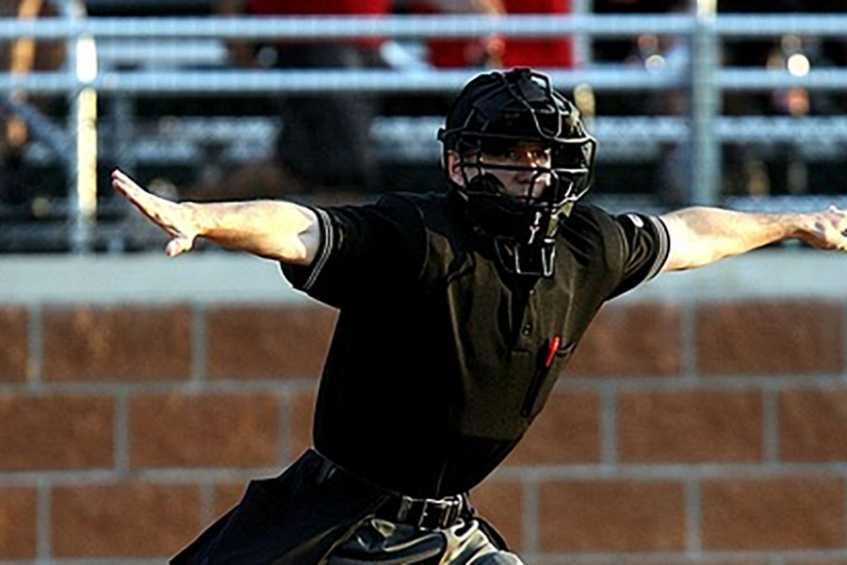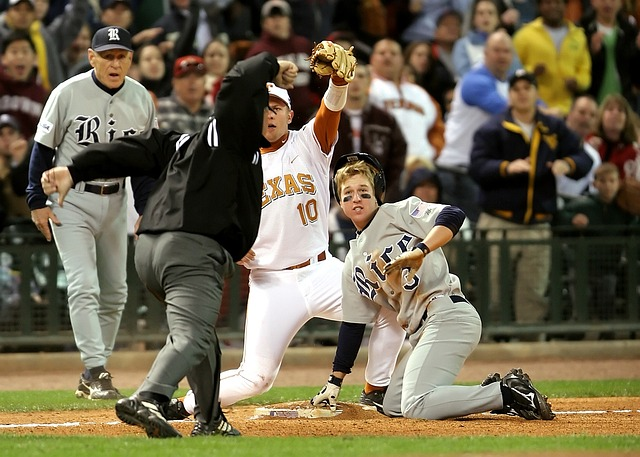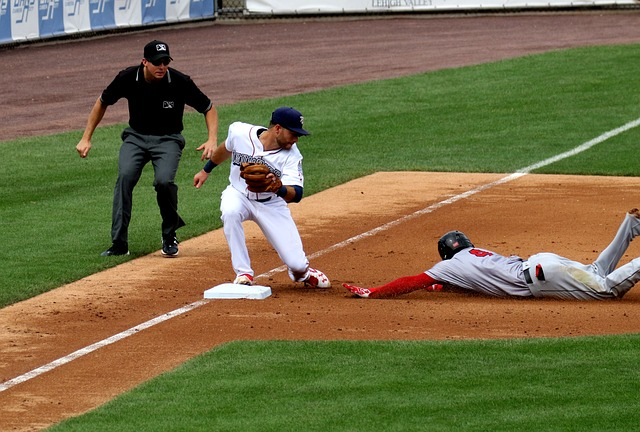
Baseball is a sport that is beloved by millions of people all around the world. Whether you are a fan of the game or a player, you have likely come across the terms "safe" and "out" in baseball. These terms are used to describe the result of a play, with safe indicating that a baserunner has reached a base without being tagged or forced out and out indicating that a baserunner has been tagged or forced out. But what exactly does safe mean in baseball?
In this blog post, we will delve into the basic rules of safe vs. out calls in baseball and explore the role of umpires in making safe calls. We will also examine how the introduction of instant replay has impacted safe calls and discuss its implications for the game.
Understanding what safe means in baseball is essential for players and fans alike. It is a fundamental concept that forms the basis of many of the game's rules and strategies. With this guide, you will gain a deeper understanding of safe calls in baseball and how they impact the game. So let's get started!

In baseball, the goal of the offensive team is to score runs, while the defensive team aims to prevent runs from being scored. One of the key moments in the game is when a runner attempts to reach base safely while the defensive team tries to get them out.
When a runner is attempting to reach a base, there are several ways they can be called "out" by the umpire. For example, if a fielder tags the runner with the ball while the runner is not touching a base, the runner is considered "tagged out." Similarly, if a fielder throws the ball to a base before the runner reaches it and the ball is caught by a fielder who touches the base before the runner, the runner is considered "thrown out."
However, if the runner successfully touches the base before being tagged or before a fielder touches the base with the ball, they are considered "safe." Additionally, if the ball is hit in a way that allows the batter to reach base safely without being thrown out, they are considered "safe" as well.
It is important to note that a runner can also be called "out" if they interfere with a fielder's ability to make a play, or if they fail to tag up after a fly ball is caught. The specific rules around safe vs. out calls can vary slightly depending on the level of play, but these are the basic guidelines.
Understanding the rules of safe vs. out calls is essential for players, coaches, and fans alike. In the next section, we'll discuss the role of umpires in making these calls.

Umpires play a crucial role in making safe vs. out calls in baseball. There are typically four umpires on the field during a game, each with their own specific area of responsibility. The home plate umpire is responsible for calling balls and strikes, while the three base umpires are responsible for making calls on the bases.
When a play is happening, the base umpire closest to the action will make the call. They must determine whether the baserunner has reached the base before the ball or the fielder’s tag. It's important to note that umpires are human and can make mistakes, so sometimes calls may be disputed by players, coaches, and fans.
To assist with making the correct calls, umpires have specific positioning and mechanics they follow. For example, when making a call on a tag play, the base umpire will move into the infield and position themselves in a way that allows them to see the play clearly. They will also use specific hand signals to indicate the call they are making, such as a closed fist for an out call and an open hand for a safe call.
Umpires also have the ability to call for instant replay review in certain situations. This technology has been implemented in recent years to help ensure that calls are made as accurately as possible. If a manager disagrees with an umpire’s call, they can request a review of the play, and the decision can be overturned if the replay shows that the call was incorrect.
In recent years, the use of instant replay in baseball has become increasingly common. Instant replay is used to review umpires' calls on the field and determine whether a play was called correctly. This has had a significant impact on safe calls in baseball.
Prior to the implementation of instant replay, umpires were solely responsible for making calls on the field. This meant that any incorrect calls were final and could not be overturned. With the advent of instant replay, however, umpires' calls can now be reviewed and corrected if necessary.
Instant replay is used in a number of situations in baseball, including safe calls. If a runner is called out on a safe call, the play can be reviewed to determine whether the runner was actually safe. This has led to a number of controversial calls being overturned and the correct call being made.
One of the biggest advantages of instant replay is that it ensures fairness in the game. If a call is made incorrectly, the use of instant replay can correct that call and ensure that the correct outcome is reached. This is particularly important in high-pressure situations, such as during the playoffs or World Series, where a single incorrect call could have a significant impact on the outcome of the game.
However, there are also some disadvantages to the use of instant replay. For example, it can slow down the pace of the game and disrupt the flow of play. Additionally, there is still some subjectivity involved in determining whether a play was called correctly, even with the use of instant replay.
Overall, the use of instant replay has had a significant impact on safe calls in baseball. While it has its drawbacks, it ensures fairness in the game and has led to a number of incorrect calls being overturned.

Safe and out calls in baseball can often be the source of intense debate and controversy, particularly when the calls are close. Here are some examples of memorable safe and out calls from past baseball games:
Derek Jeter's Flip Play - In Game 3 of the 2001 ALDS, the New York Yankees were facing off against the Oakland Athletics. In the top of the 7th inning, the A's Terrence Long hit a ball deep into right field, causing Yankees outfielder Shane Spencer to make a wild throw towards home plate. Jeter, who was playing shortstop, ran across the field and made a backhanded flip to catcher Jorge Posada, who tagged out Jeremy Giambi just before he could cross the plate. The call was ruled safe initially, but upon review, it was overturned and Giambi was called out.
Don Denkinger's Call - In Game 6 of the 1985 World Series, the St. Louis Cardinals were facing off against the Kansas City Royals. With one out in the bottom of the 9th inning and the Cardinals leading 1-0, the Royals' Jorge Orta hit a slow ground ball to first base. Cardinals first baseman Jack Clark fielded the ball and threw to pitcher Todd Worrell, who was covering first. However, umpire Don Denkinger called Orta safe, despite replays showing that he was clearly out. The Royals went on to score two runs in the inning and win the game, forcing a Game 7.
Jeffrey Maier's Catch - In Game 1 of the 1996 ALCS, the New York Yankees were facing off against the Baltimore Orioles. With the score tied at 4 in the bottom of the 8th inning, Yankees shortstop Derek Jeter hit a deep fly ball to right field. Orioles right fielder Tony Tarasco went back to make the catch, but a 12-year-old fan named Jeffrey Maier reached over the wall and caught the ball, pulling it into the stands. Despite protests from the Orioles, the umpires ruled the play a home run, giving the Yankees the lead.
In each of these examples, the safe and out calls made by the umpires were closely scrutinized by fans and commentators alike. While some calls may have been controversial or even incorrect, they ultimately had a significant impact on the outcome of the games. Understanding the rules and nuances of safe and out calls is crucial for players, coaches, and fans alike
In conclusion, understanding the concept of "safe" in baseball is crucial for players, coaches, and fans alike. From the basic rules of safe vs. out calls to the role of umpires in making these calls, there are many factors that can impact whether a player is declared safe or out on the field. With the increasing use of instant replay in baseball, safe calls are becoming more accurate and reliable, but there are still challenges and controversies surrounding their implementation.
As a fan or player of baseball, it's important to stay informed and educated about these issues in order to fully appreciate the game and its intricacies. Whether you're celebrating a walk-off run or analyzing a close call at first base, having a solid understanding of safe calls can enhance your enjoyment of the sport. So next time you're watching a game, pay attention to the safe calls and consider the factors that contribute to them. You might just gain a new appreciation for this essential aspect of baseball.
Chris Sloan is a former baseball league commissioner and travel baseball coach who has made significant contributions to the sport. In 2018, he founded selectbaseballteams.com, a website that helps parents find youth and travel baseball teams in their local areas. Since its launch, the website has experienced impressive growth, offering a wealth of resources including teams, news, tournaments, and organizations. Chris's unwavering passion for baseball and his innovative approach to connecting parents with quality baseball programs have earned him a respected reputation in the baseball community, solidifying his legacy as a leading figure in the world of youth and travel baseball.
There are 0 comments on "What does safe mean in baseball?"
chandler allen says:
"Hi my name is chandler, i’ve enjoyed..."
On Wanting to tryout for summer ball. as an 18 year old
david graham says:
"With no current MLB team in Canada,..."
On With no current MLB team in
Charles Chavez says:
"To All Coaches: Do you have13U or..."
On Looking for Games